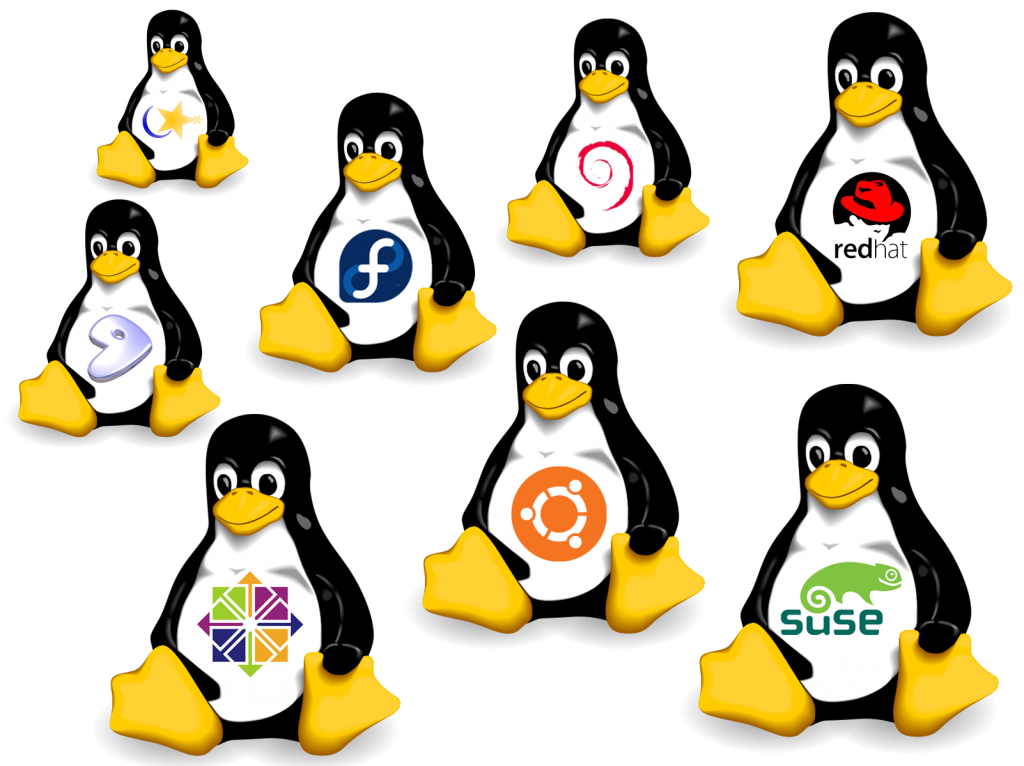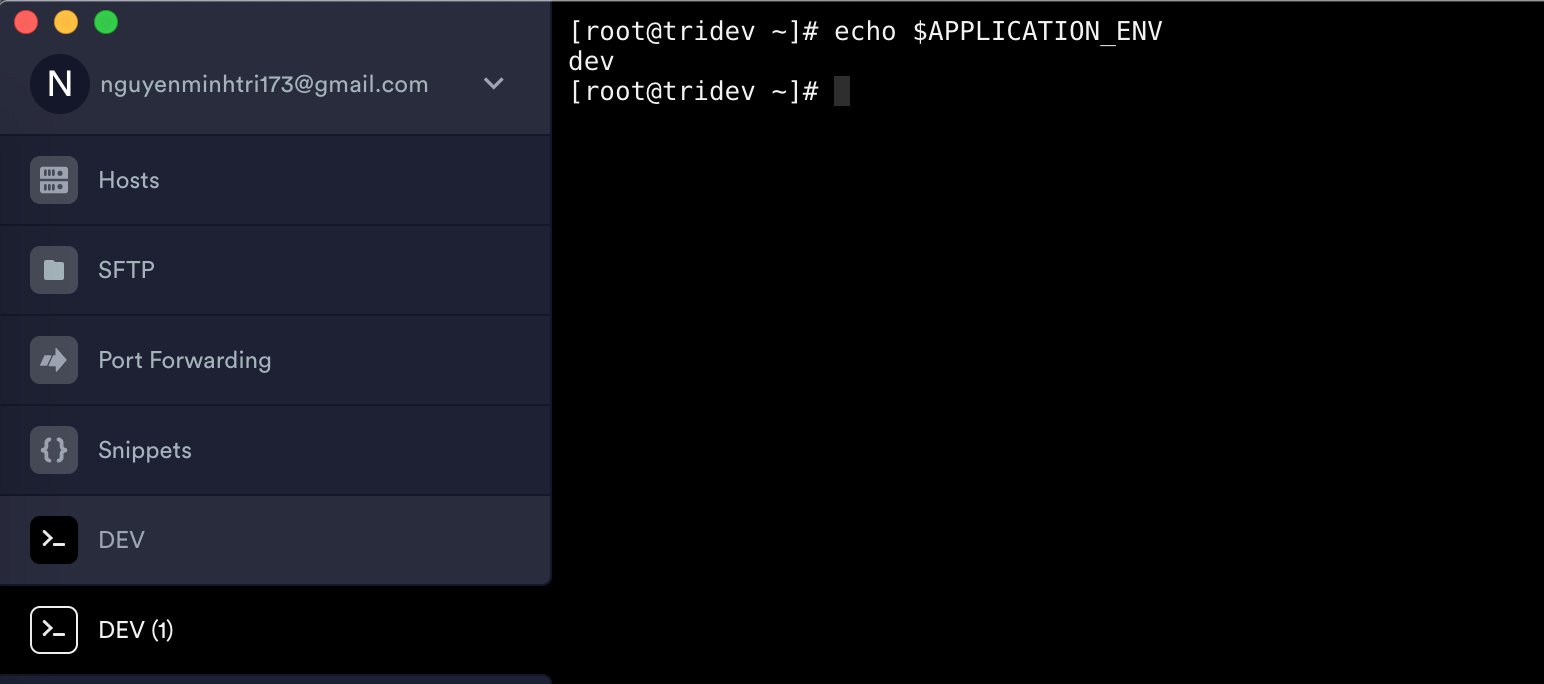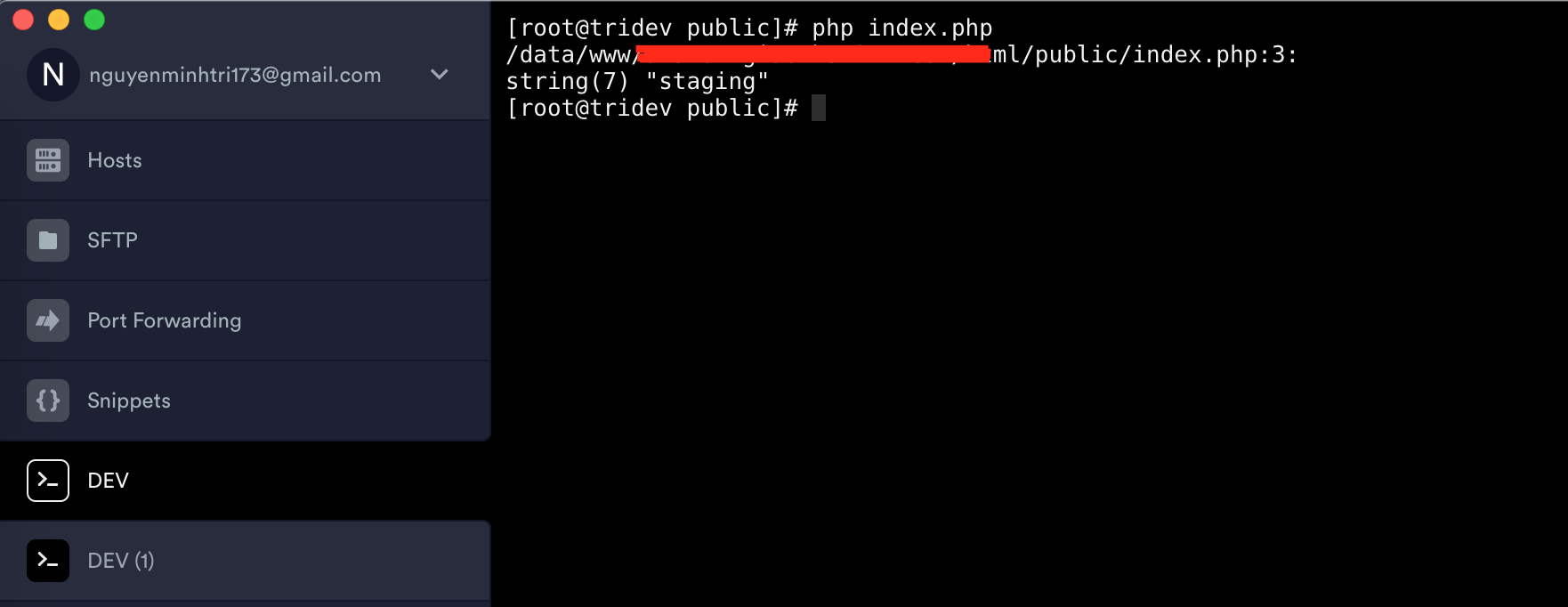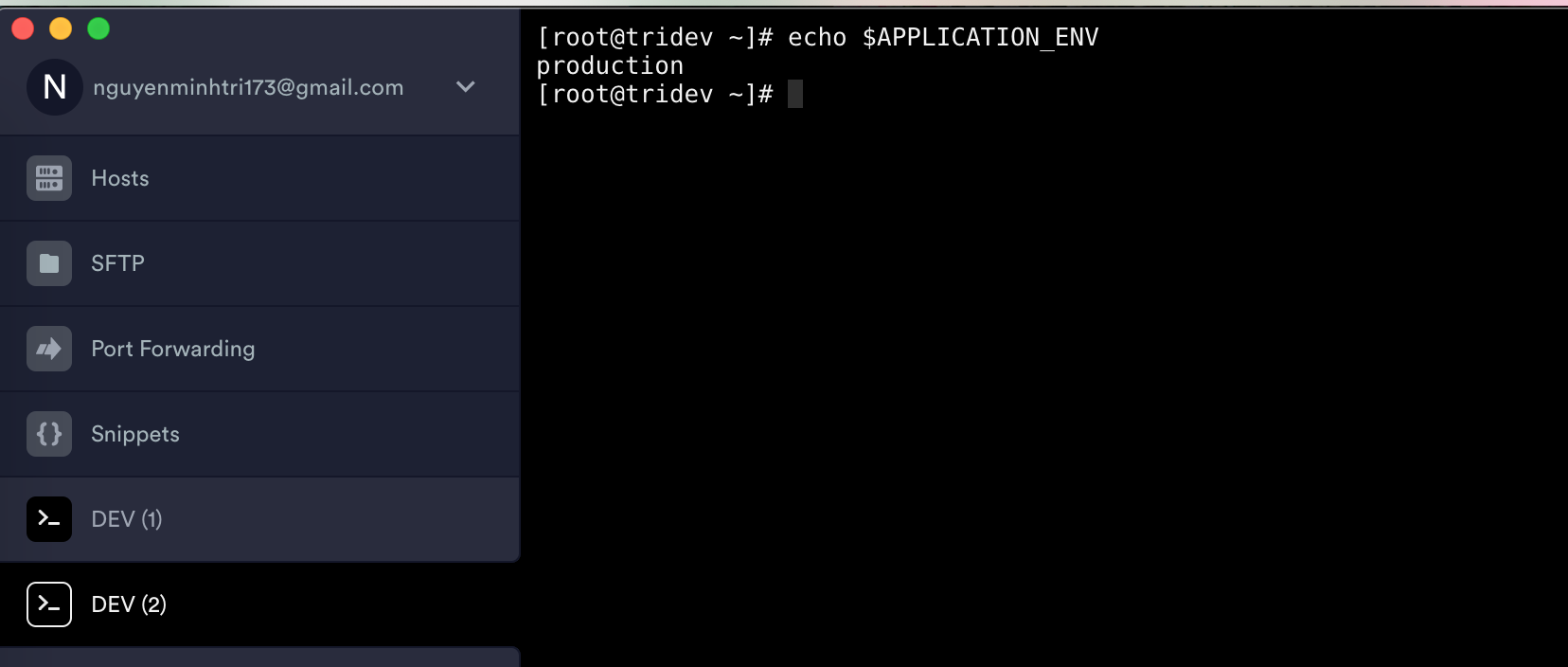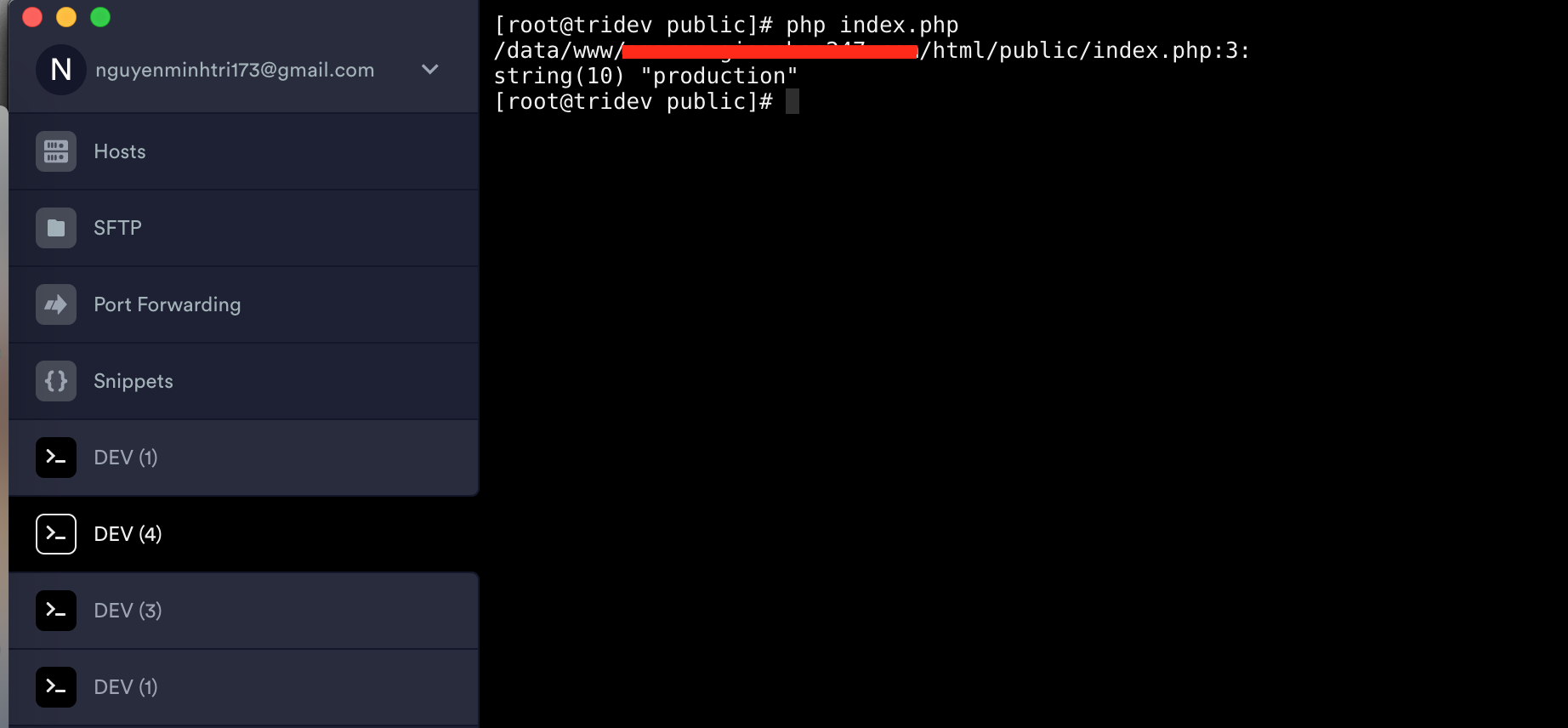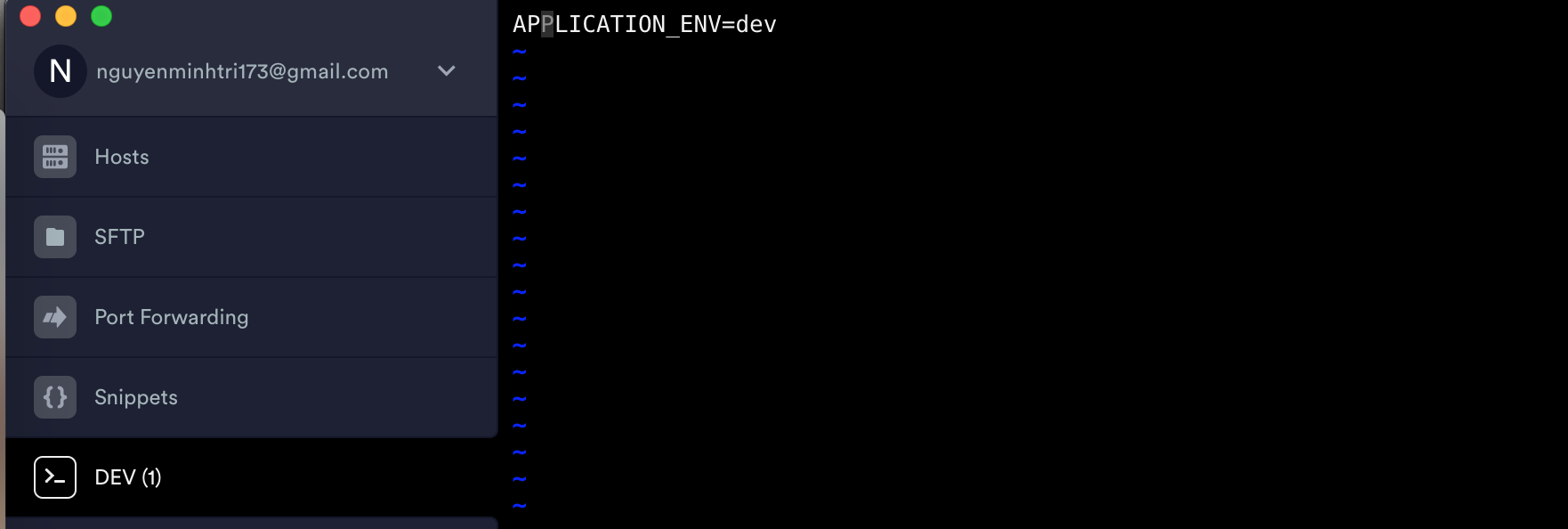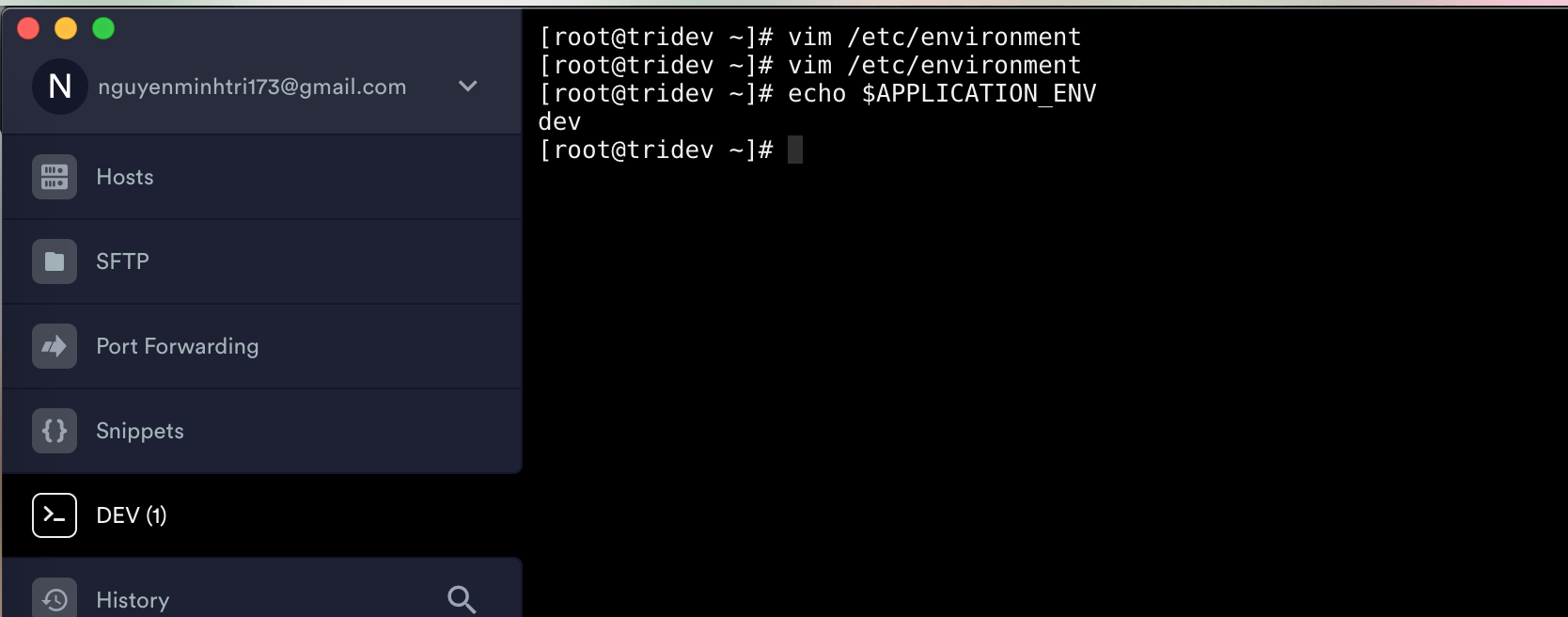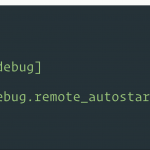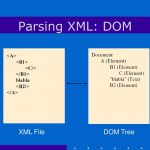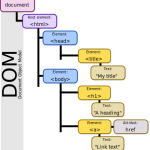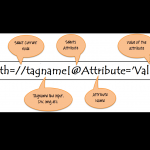Way 1 :
The easiest way, but it’s only available in this session, when you logout , or login for new session , the environment variable is not existed.
Run below command :
export APPLICATION_ENV='staging'
And check value of variable APPLICATION_ENV
echo $APPLICATION_ENV
 And login for the new session . The environment isn’t
And login for the new session . The environment isn’t staging, it’s dev ( i had set it before , that way in Way 3 )
Check this environment variable in PHP CODE in old session
|
1 2 3 4 |
<?php $environment = getenv('APPLICATION_ENV'); var_dump($environment); exit; |
Result :
Way 2 :
- When you use this way, the environment variables will set for your user, not for all users in your OS. So if your have more than one , you should use this way to set environment variables. It’s will not conflict with another user.
- If you logout, and login with your user, it’s will be existed.
You can use vim, nano, vi …etc
vim ~/.bash_profile
Add those lines and save
APPLICATION_ENV=production
export APPLICATION_ENV
Then logout and login. And test.
Test with PHP CODE i wrote in way 1
Way 3 :
This way will set environment variables for all users in your OS.
I choose this way, because i’m root =))
vim /etc/environment
Then add this line
APPLICATION_ENV=dev
Then save & close the editor.
You don’t need to logout and login, it effect after you save .
Then this with PHP CODE
Note : bài này mình tự viết bằng tiếng anh nên có sai sót gì thì chỉnh giúp mình nhé. Thanks
